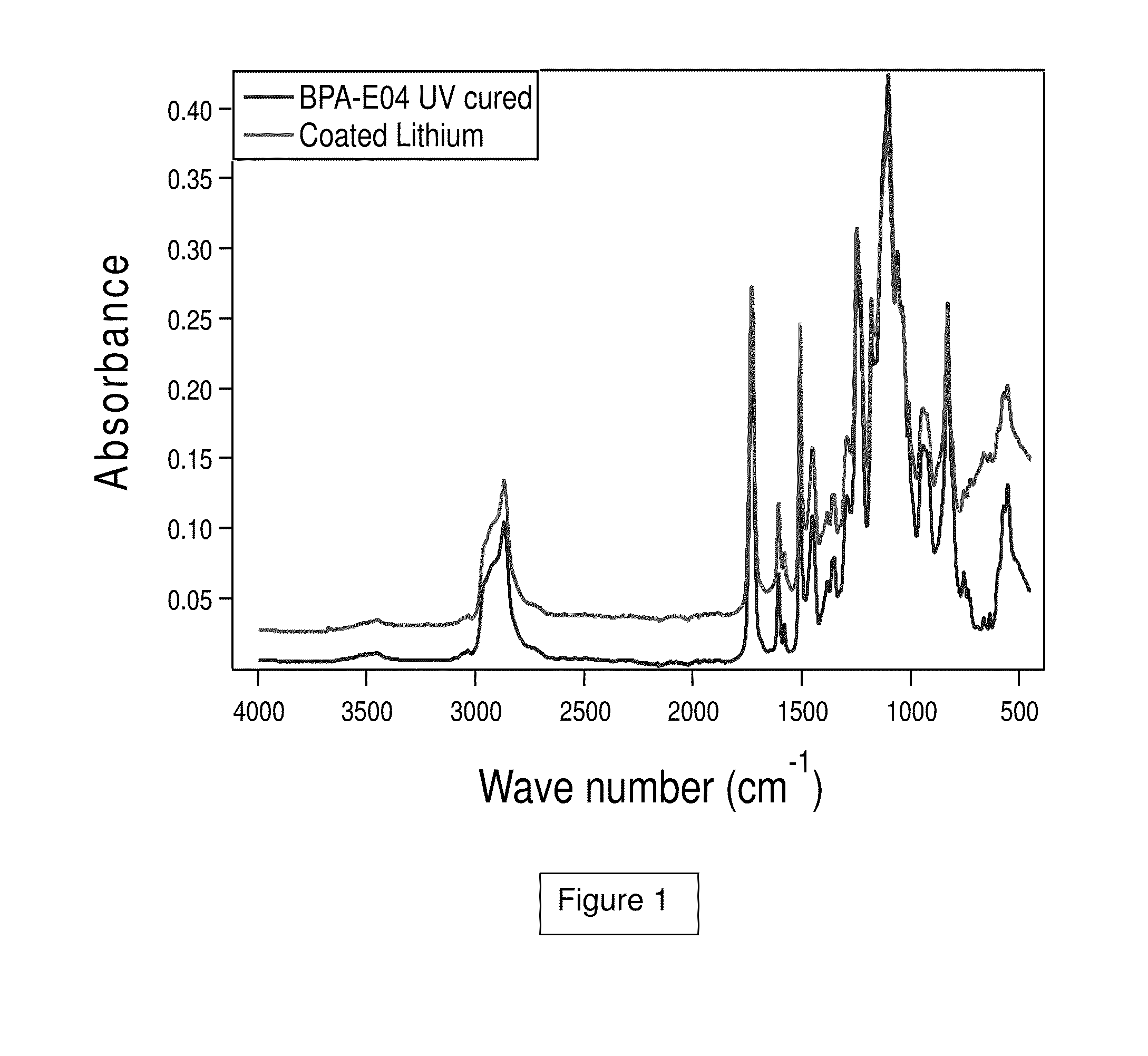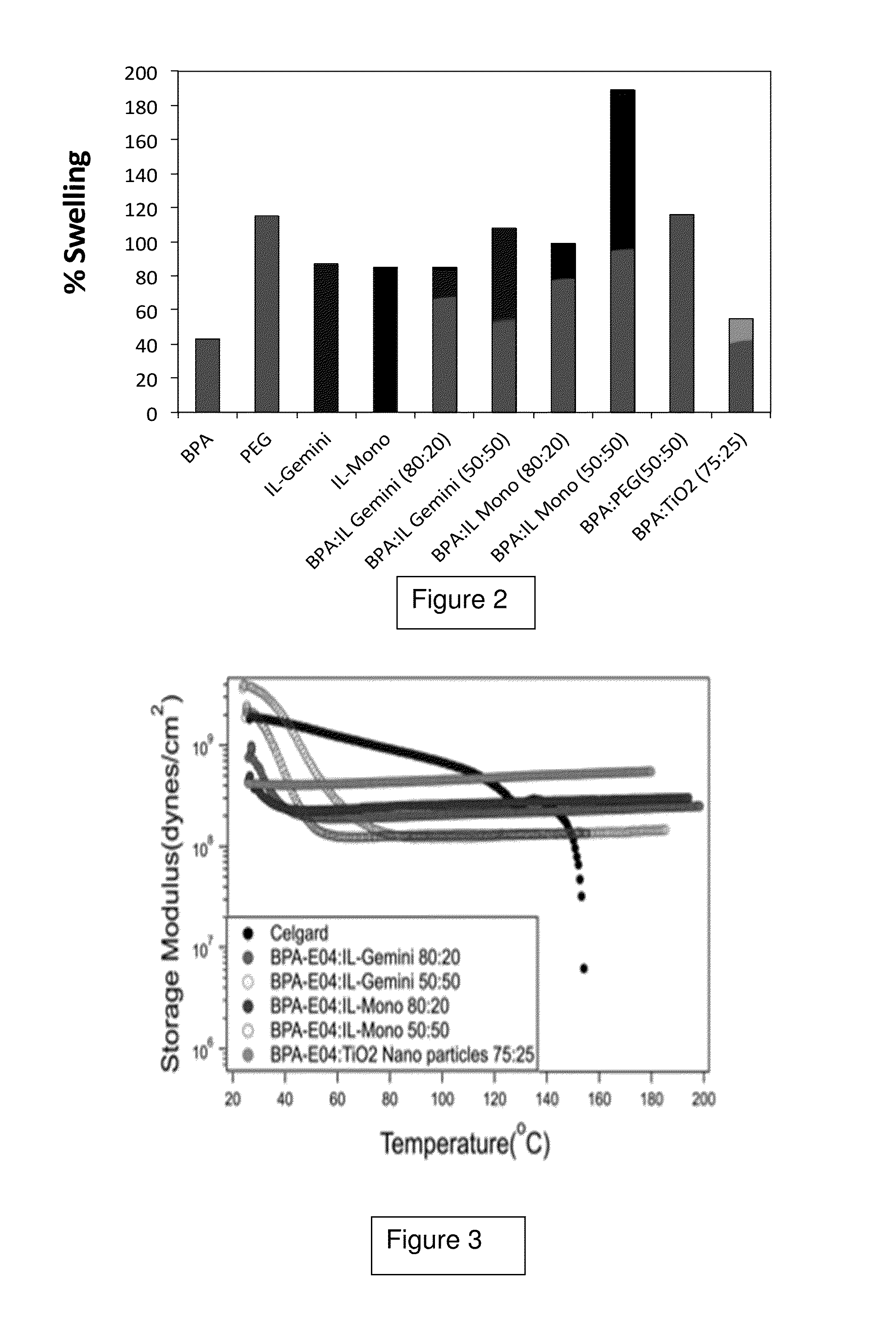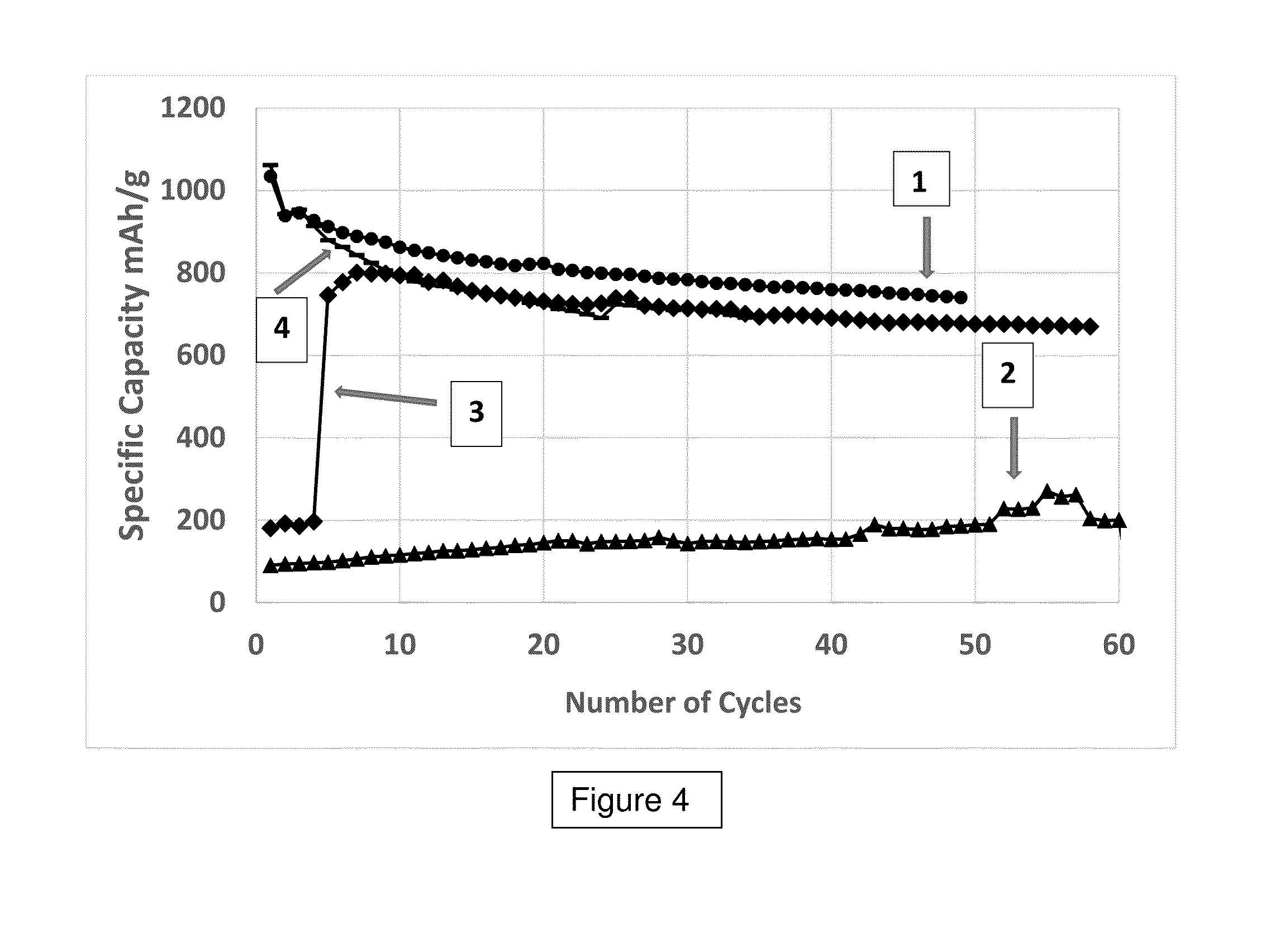Protective coating of metal
- Summary
- Abstract
- Description
- Claims
- Application Information
AI Technical Summary
Benefits of technology
Problems solved by technology
Method used
Image
Examples
example 1
Ionic Liquid Concentration
[0053]An overcoat solution was prepared by mixing 7.4 grams of bisphenol A ethoxylate diacrylate, average MW˜688 (EO / Phenol 4) obtained from Aldrich Chemicals, and 50 microliters of 2-hydroxy-2methylpropiophenone UV sensitizer also obtained from Aldrich Chemicals, in 38 grams of dimethoxy ethane (DME) solvent. Two other formulations were mixed introducing the JL3-131 ionic liquid shown below at two concentrations, 20 wt. % and 30 wt. % (Table 1).
TABLE 1FormulationBPA-EO4JL3-131FL300PEGSMI-58Mixture 1100% 0%0%0%0%Mixture 275%0%25% 0%0%Mixture3 0%0%0%0%100% Mixture 480%20% 0%0%0%Mixture 550%50% 0%0%0%Mixture 6 0%100% 0%0%0%Mixture 750%0%0%50% 0%Mixture 8 0%0%0%100% 0%Mixture 980%0%0%0%20% Mixture 1050%0%0%0%50%
Example 2: Cycling Results for the Coin Cells Made from Example 1 are Plotted in FIG. 4
[0054]The curve labeled I is the specific capacity of the cell using the non-overcoated anode (control). Curve 2 is the specific capacity of the cell using an anode ...
PUM
 Login to View More
Login to View More Abstract
Description
Claims
Application Information
 Login to View More
Login to View More - R&D
- Intellectual Property
- Life Sciences
- Materials
- Tech Scout
- Unparalleled Data Quality
- Higher Quality Content
- 60% Fewer Hallucinations
Browse by: Latest US Patents, China's latest patents, Technical Efficacy Thesaurus, Application Domain, Technology Topic, Popular Technical Reports.
© 2025 PatSnap. All rights reserved.Legal|Privacy policy|Modern Slavery Act Transparency Statement|Sitemap|About US| Contact US: help@patsnap.com



